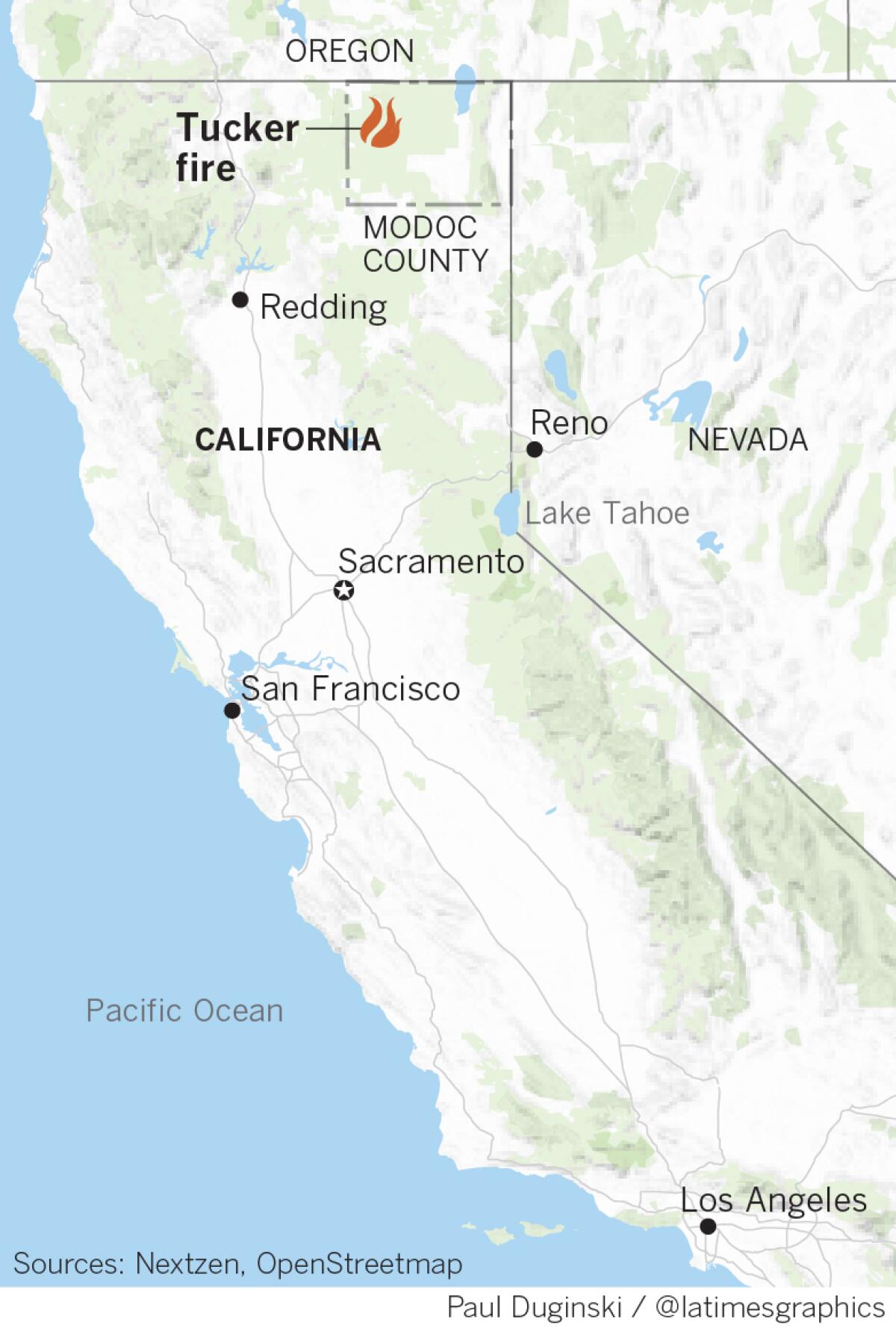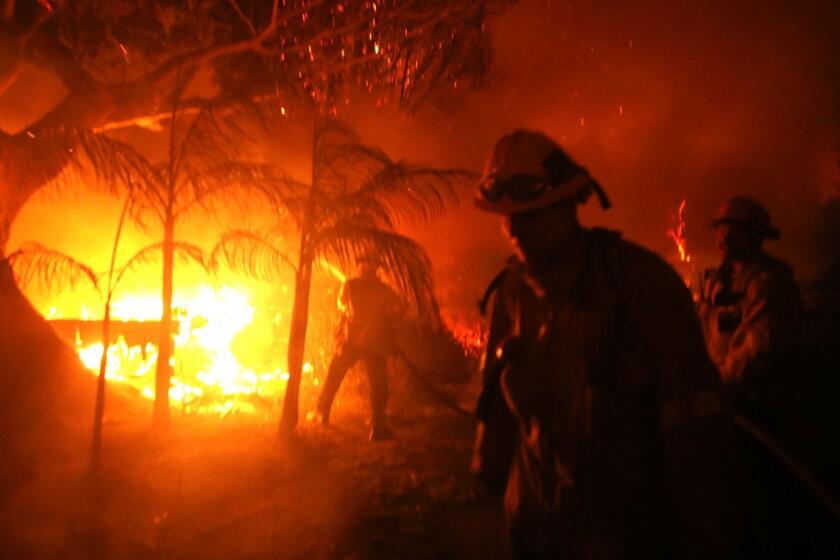Tucker fire grows to 14,000 acres, becoming largest blaze in California this year
- Share via
The Tucker fire in Modoc County has burned more than 14,000 acres with 10% reported containment, making it the largest wildfire in California so far this year, officials said Tuesday.

Officials with Cal Fire and the U.S. Forest Service said the fire started in rural northeastern California on Sunday afternoon off California Highway 139 and Tucker Butte Road, about six miles southwest of Clear Lake Reservoir. The fire, which is believed to have been caused unintentionally by humans, grew 10,000 acres in one day. The latest reported acreage of the blaze is 14,419, making it the biggest active fire burning in the state and the largest in California so far in 2019.
No homes are threatened and no evacuations have been ordered as of Tuesday afternoon, but affected residents in the County Road 114/202, Coyote Butte, Horse Mountain area have been issued a warning that they will be contacted if an evacuation is necessary.
The U.S. Forest Service said in an update that the fire didn’t burn as erratically Tuesday as it had over the past few days. Fire crews have worked on fire-line construction and provided point protection for infrastructure in the fire area Monday while aiming to protect the Clear Lake National Wildlife Refuge and local wildlife habitats. California Incident Management Team 10 has also been ordered and is expected to take over fire-suppression management starting Wednesday, officials said.
Ken Sandusky, a public information officer with the U.S. Forest Service, said that wildfires in the Modoc National Forest are at their most challenging when flames reach areas that have not been treated with fire-fuel reduction efforts, including juniper reduction.
He said that because wildfires have long been a healthy, key part of the land’s ecological processes, including by Native Americans as a land-management tool, fire crews have seen success in areas where encroaching juniper was removed with controlled, low-level fire. This is because when a wildfire is burning up against such areas, firefighters are better able to use that land to help manage and control the blaze.
When a wildfire is burning through areas that have not been treated, the situation is far more dangerous and harder to control, Sandusky said.
“We cannot emphasize enough how much benefit we get in situations like these when we’re able to have previously treated the area affected. It’s just a night-and-day difference,” Sandusky said.
Summer finally arrived in Southern California this weekend with temperatures in the 90s and a series of small fires around the region.
So far this year, fires have burned more than 37,472 acres of land in California, per Cal Fire. The Tucker fire also comes after the Goose 2 and Rainbow fires, which were also suspected by officials to have been unintentionally caused by humans and burned in Modoc County earlier this year. Before the Tucker fire, the Goose 2 fire identified on July 17 was the most recent and was 100% contained at 128 acres.
The 2019 fire season follows California’s deadliest and most destructive wildfires in 2017 and 2018. The U.S. Forest Service asks residents and visitors in fire-prone areas to follow safety precautions by making sure campfires are fully extinguished before leaving them unattended, never disposing of a cigarette in an area where it could start a fire and never bringing fireworks into any national forest.
More to Read
Sign up for Essential California
The most important California stories and recommendations in your inbox every morning.
You may occasionally receive promotional content from the Los Angeles Times.












